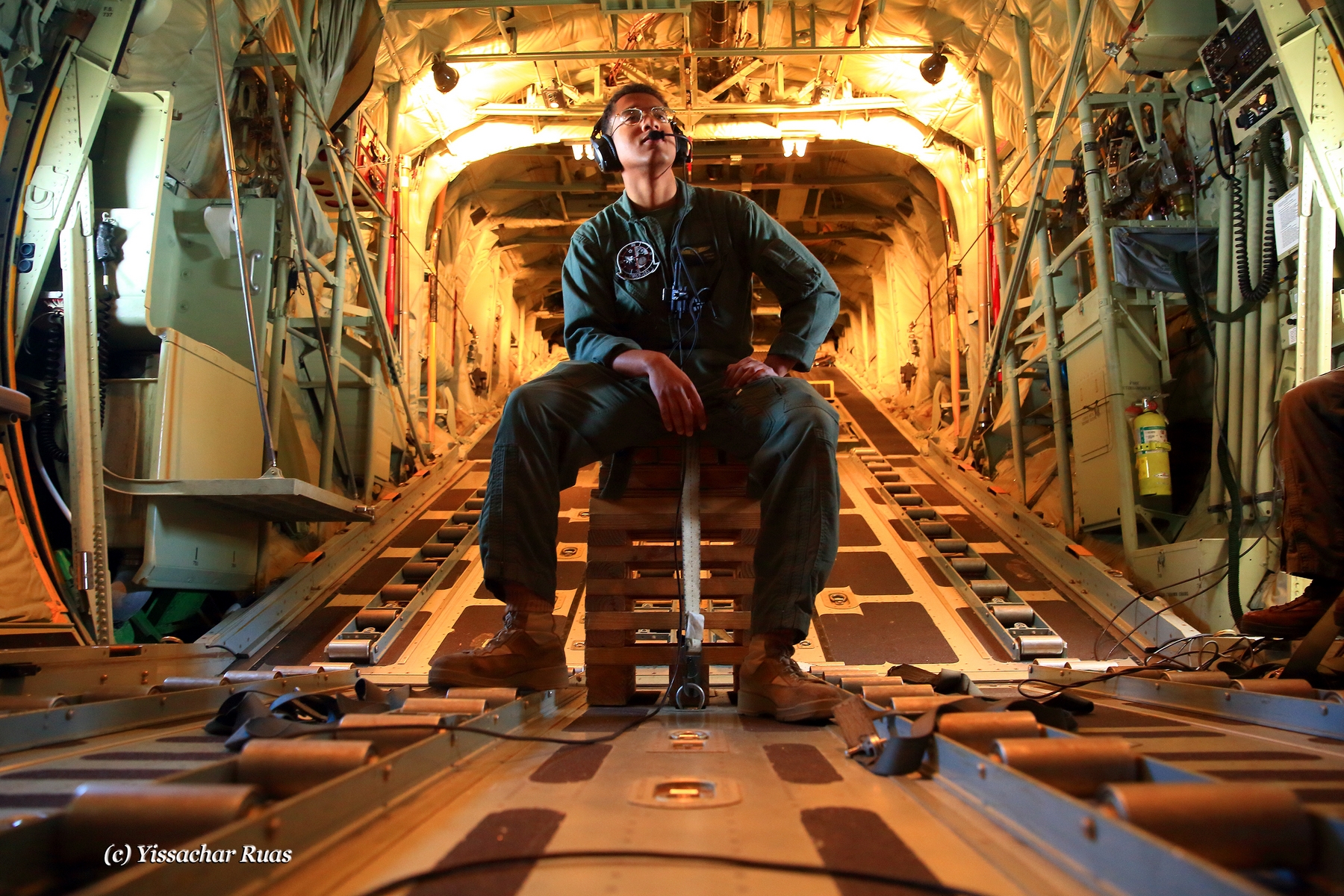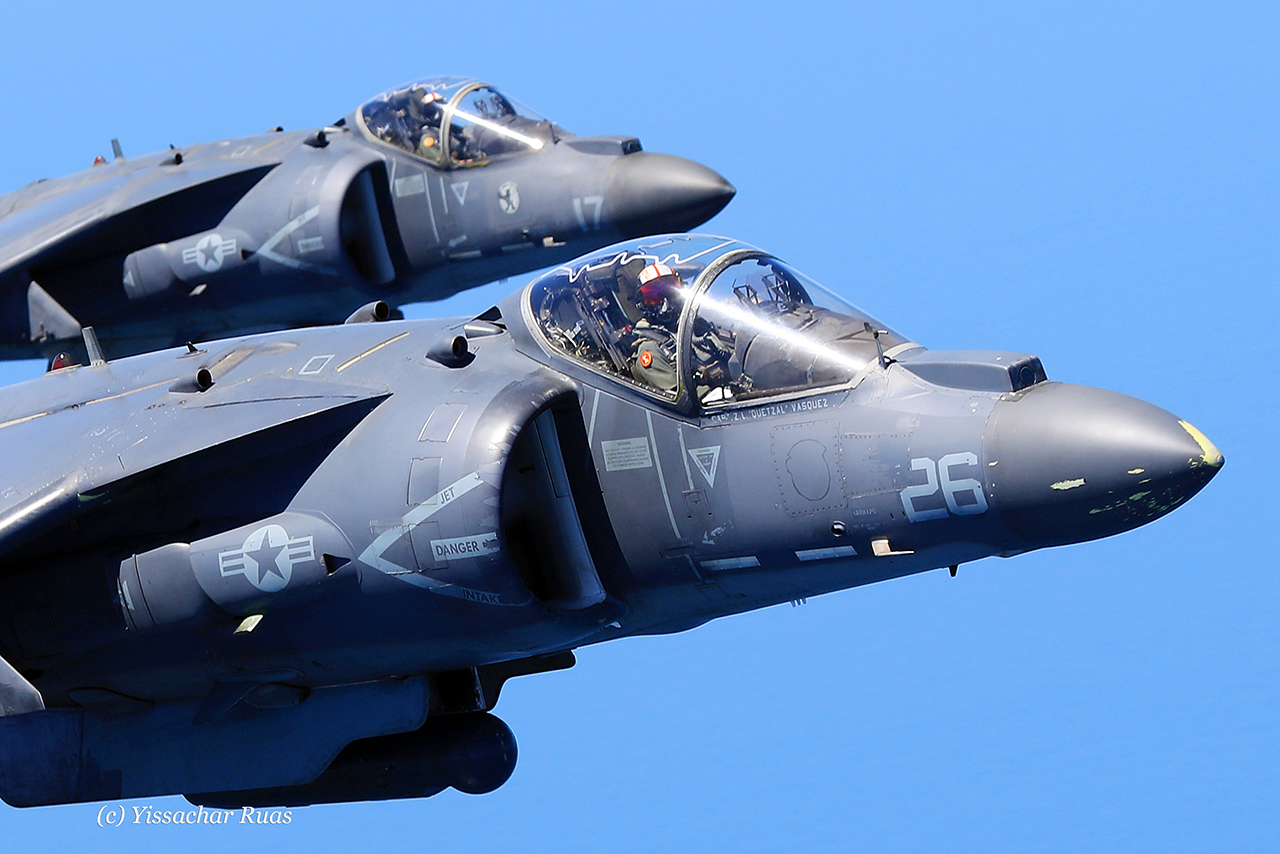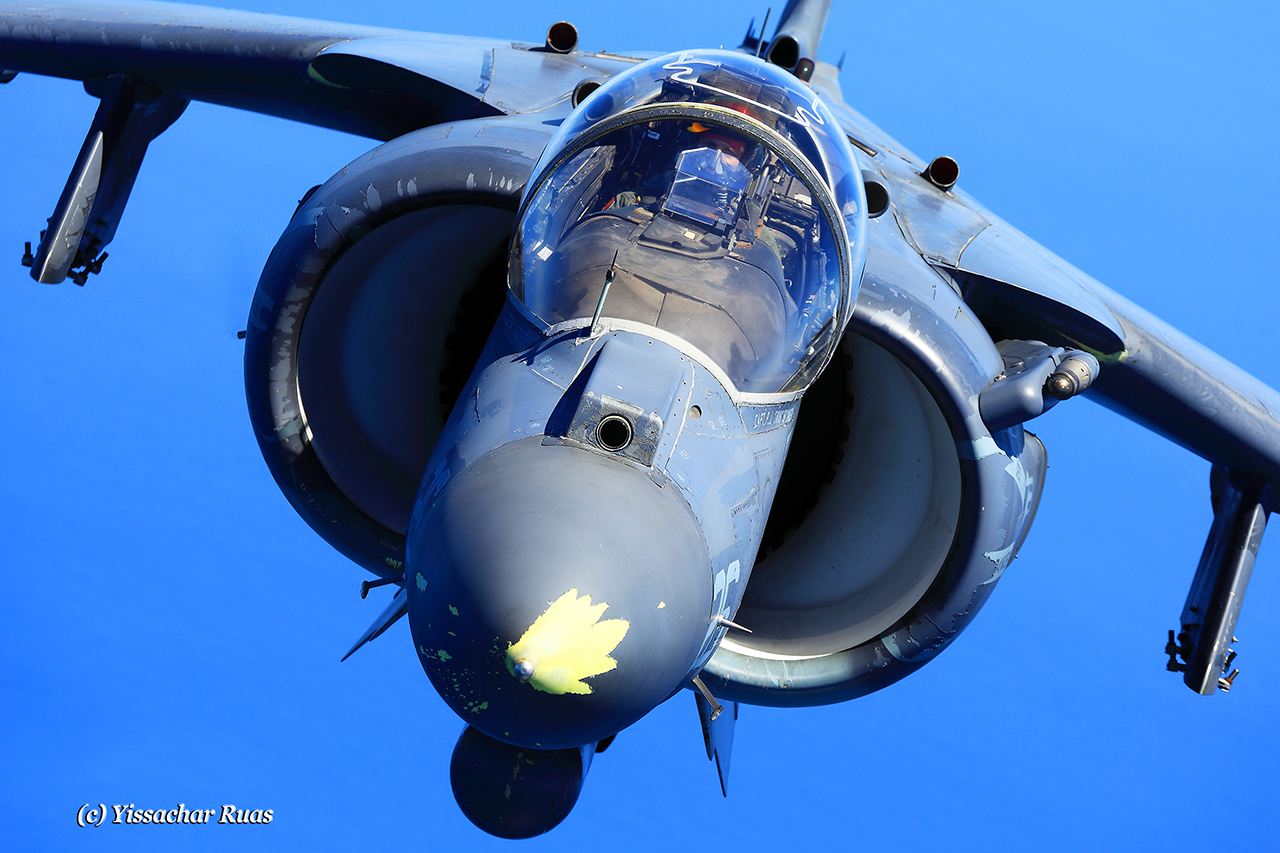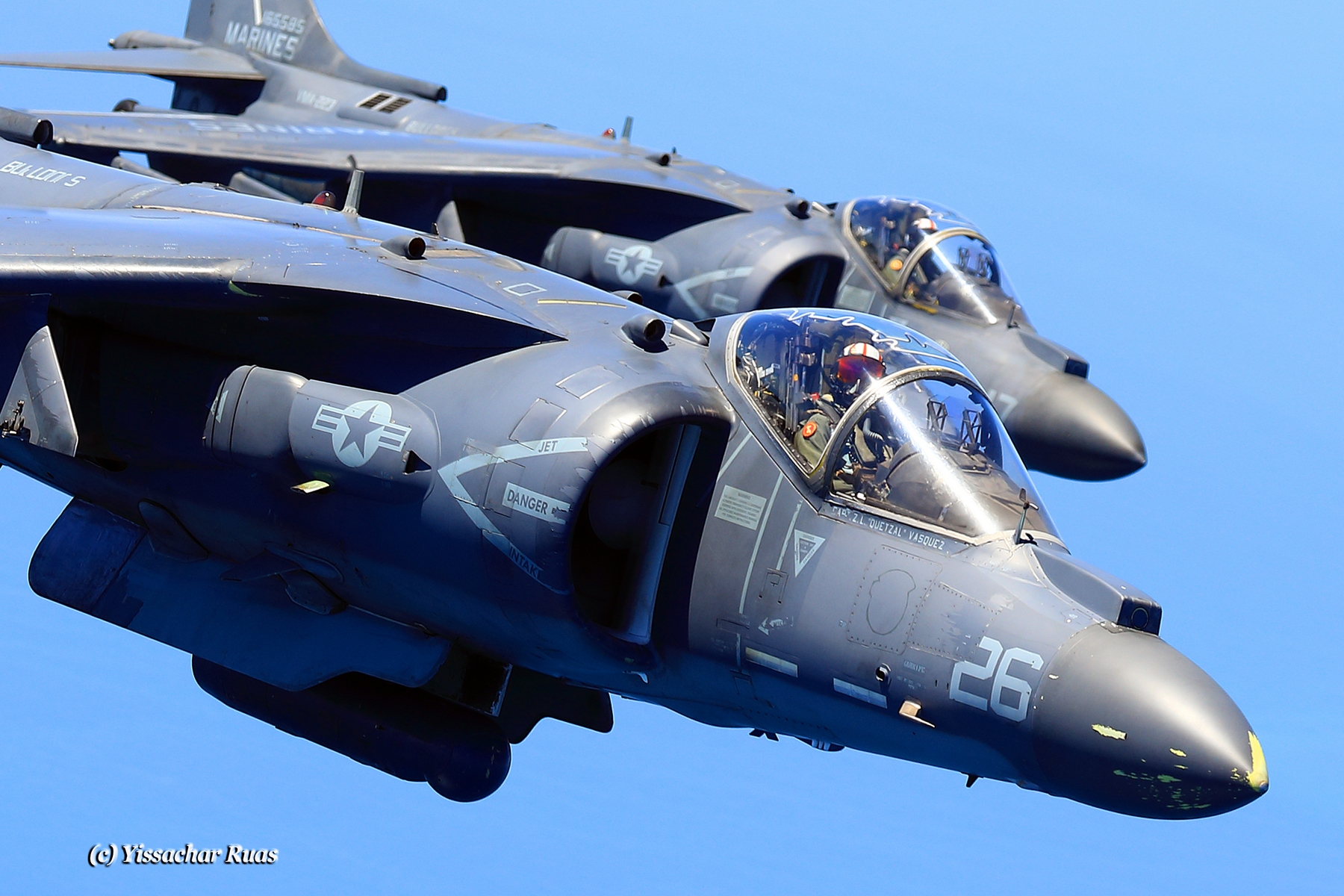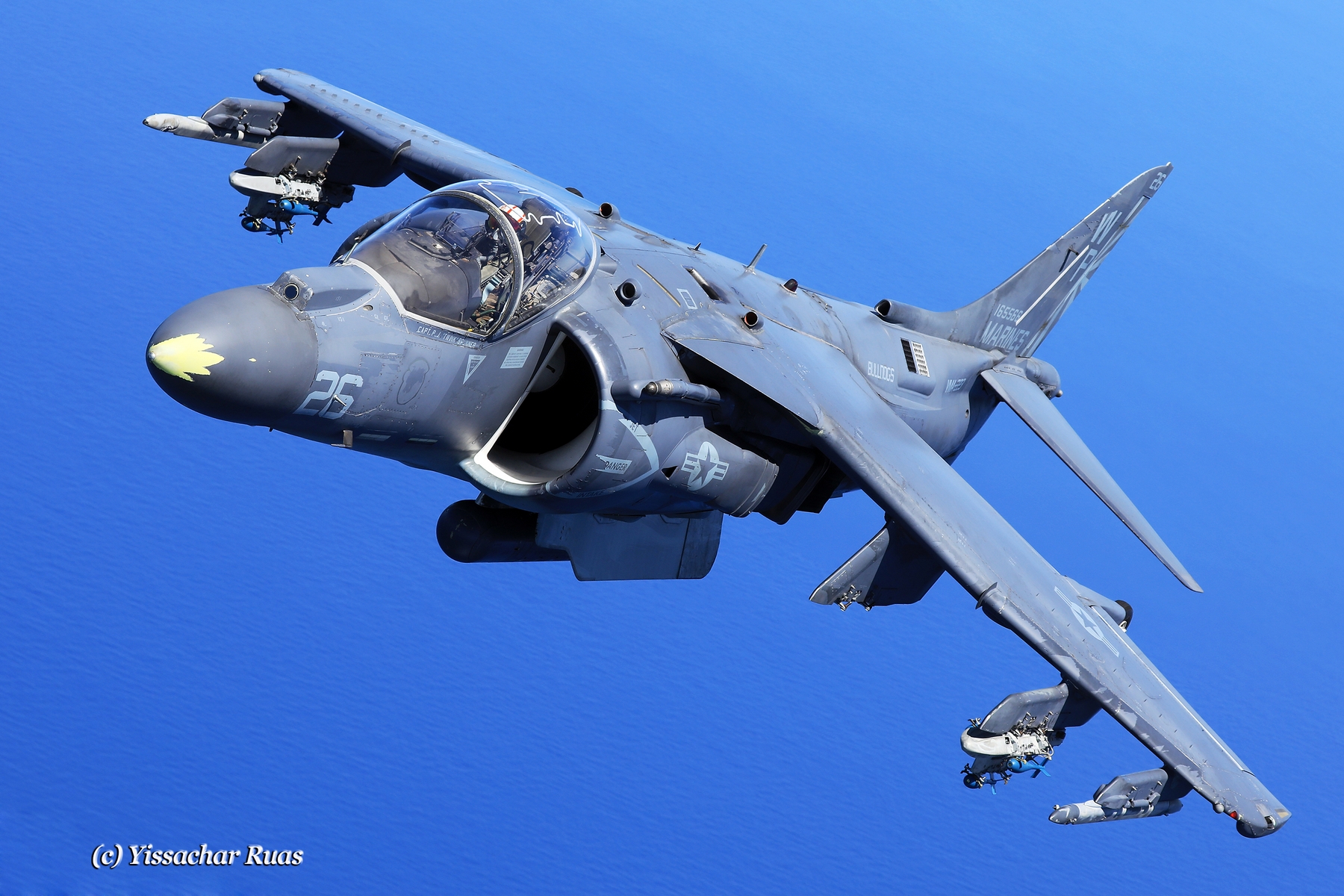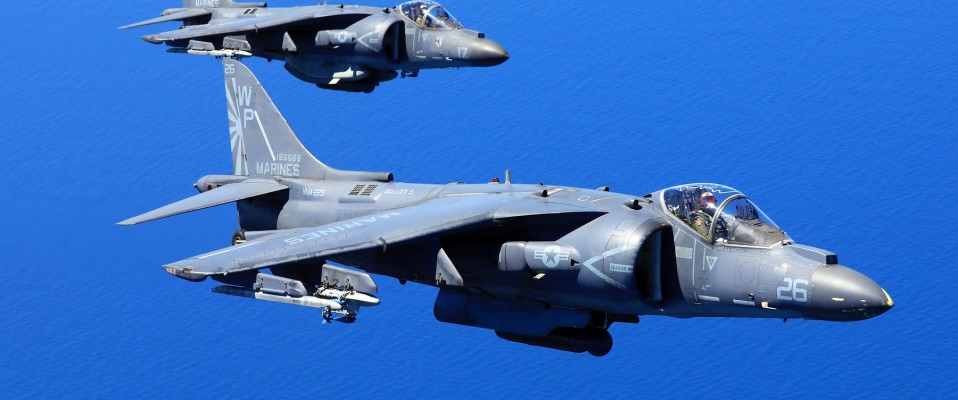Harrier – a Living Legacy
Report and photos by Yissachar Ruas
July 21, 2023
The Winds of change are brewing at MCAS Cherry Point, home to a large contingent of 2nd Marine Aircraft Wing’s fixed wing assets and birthplace of the AV-8B Harrier II. The decades old workhorse of Marine Aviation is still working hard and deploying regularly. In the background, the Harrier’s replacement, the F-35B Lightning II, is already making its rounds around the base, checking the Installation’s capability to support its future operations there. The Harrier’s 2 tenant Squadrons Marine Attack Squadron (VMA) 223 and VMA-231 are still standing strong, with the Harrier’s service planned until at least 2027.
The Harrier’s main role is to provide close air support (CAS) for the Marine Air-Ground Task Force (MAGTF). The Harrier had several variants to better the missions it is tasked with, for the most part, today, the Harrier fleet is standardized across the board. Over the past decade, despite the introduction of the F-35B and its enhanced capabilities, there are still missions that are unique to the Harrier and require its constant support.
Harrier aircraft routinely operate from the USMC’s large amphibious assault ships, despite being routine in nature, it is an arduous task. The Harrier’s ability to take off and land vertically or on very short runways (VSTOL = Vertical / Short Take Off & Land) is what makes the aircraft unique and apt for this type of mission. While landing on an aircraft carrier is considered one of the hardest tasks a military pilot could be asked to perform, landing on a U.S. Navy amphibious assault ship is a close second. The Harrier’s Short Take Off Vertical Landing (STOVL) capability makes landing on a ship’s deck slightly easier in comparison, yet it has its own long set of risks including landing on a moving deck and potential engine failure. Additionally the actual flying of the aircraft in takeoff and landing is considerably more challenging compared to a conventional aircraft which adds to the complexity.
The STOVL capability also allows Harrier aircraft to operate on smaller airfields closer to the fight or from ships smaller than aircraft carriers, allowing Marine Attack Squadrons to support more diverse missions around the world. Operating from the ship is quite a bit different, primarily because operating with a full weapons load off a ship deck can be unforgiving. To land on the ship, the Harrier has to be pretty low on fuel. That key factor regarding fuel management means Boat operations have to be planned precisely and pinpoint time management is critical. Add doing all of that that when it’s night, the weather is bad, and the ship is moving, is one of the challenges Harrier pilots deployed are likely to encounter.
As a result, on the boat there will always be a Landing Signals Officer (LSO), who is also a pilot. As opposed to Carriers, the LSO will be stationed in the tower to make sure the ship is ready for landing and to coach pilots down onto the landing pad if needed. When operating from land, Harriers can normally take off with more fuel and ordnance than when at sea. Squadrons will occasionally go shore-based for part of the deployment depending on what the mission or exercise requires. Flexibility between ship and shore-based landings is what allows the Harrier to be expeditionary by nature.
Emphasizing the issue was Lt. Col. Brett Ackerbauer, the Marine Aircraft Group (MAG) 14 Operations Officer and Harrier Pilot himself. We had the opportunity to discuss the Harrier’s capabilities and mission while on the base, he stated “the one thing we must consider, is our frequency with shipboard flying. Because flying at the ship is so unforgiving, once you are current [with your ship-landing qualification] by flying at the ship, we don’t want to go too long without landing on it again to make sure we maintain our proficiency.” Last March, at the height of the conflict in the Ukraine VMA-223 Harriers deployed to Norway for Exercise Cold Response 2022 in a very similar manner, traveling by flat deck to the North Sea and hopping over to Bodo Air Station Norway to participate in the exercise.
We asked Ackerbauer if the conflict has changed the way Harrier elements train to fight on the battlefield – he responded – “From any conflict, we try to observe and learn lessons. Each conflict provides a whole host of different considerations. However, I think we always want to keep aware of whatever the most advanced threats are, what the most dangerous conflict is, and then set that as our baseline for planning. I don’t think there has been a fundamental change in focus, just some increased insight into different scenarios and the considerations that come with that.”
We had the unique opportunity to join VMA-223 “Bulldogs” Harriers in the air on a joint air refueling mission with Marine Aerial Refueler Transport Squadron (VMGR) 252’s KC-130J tanker aircraft. The mission featured a pair of Harriers that had launched from an amphibious assault ship off the coast of North Carolina and rendezvoused with us in the air. Aerial refueling is another element that enhances the Harrier’s capability to get close to the fight and loiter over the battlefield for a longer period of time. Proficiency in this field is key to the success of the mission. While our joint mission is during the daytime, night time refueling events are considerably more challenging when a Harrier pilot must use NVG’s to refuel safely.
Our mission was timed to the minute, and with only 19 minutes allocated to refueling we did our best to get some cool images. Both pilots tanking were veterans on the type with a significant amount of hours so hooking up to the KC-130Js’ fuel drogue went relatively smoothly. Following several approaches and successful “plugs”, the Harriers signed off to head out to their main objective.
Getting close to the fight is what the Harrier was built for, its internal systems are optimized to support the air-to-ground mission, particularly Close Air Support. All Harriers are equipped with the RAFAEL advanced LITENING targeting pod carried externally, this pod allows a Harrier pilot to type in a CAS 9-line coordinate almost exactly as the Joint Terminal Attack Controller (JTAC) on the ground reads it to him. Once entered, the Harrier pilot knows exactly where the target, the friendlies, and the threats are on his color-moving map. That gives Harrier pilots excellent situational awareness at critical times and allows for weapons to be employed at very close ranges on the battlefield.
As time moves forward, elements of the upcoming transition are already occurring. The last ‘new’ Harrier pilots are in training now. These brand new Harrier pilots will have a couple options ahead of them. Most will likely spend a couple years flying the Harrier and then transition to the F-35B. Some of them may get a deployment or two in the Harrier first, or they can transition right away to the F-35B. Some may fly the Harrier for a short time and then transition to other jobs in the Marine Corps, either temporarily or permanently. A common job for Marine pilots to transition to is a Forward Air Controller (FAC) tour with ground units where that pilot serves as the individual on the other end of the radio during CAS missions. Even though their primary aircraft is going away, individuals who understand tactical aviation are still important to making the Marine Air-Ground Task Force (MAGTF) effective, whether that’s by flying the Harrier or another aircraft, or by facilitating others who fly.
With the current unrest in Europe and Pacific theatres, it is safe to assume that if U.S. armed forces are deployed, the last 2 Harrier Squadrons wont be far behind.
